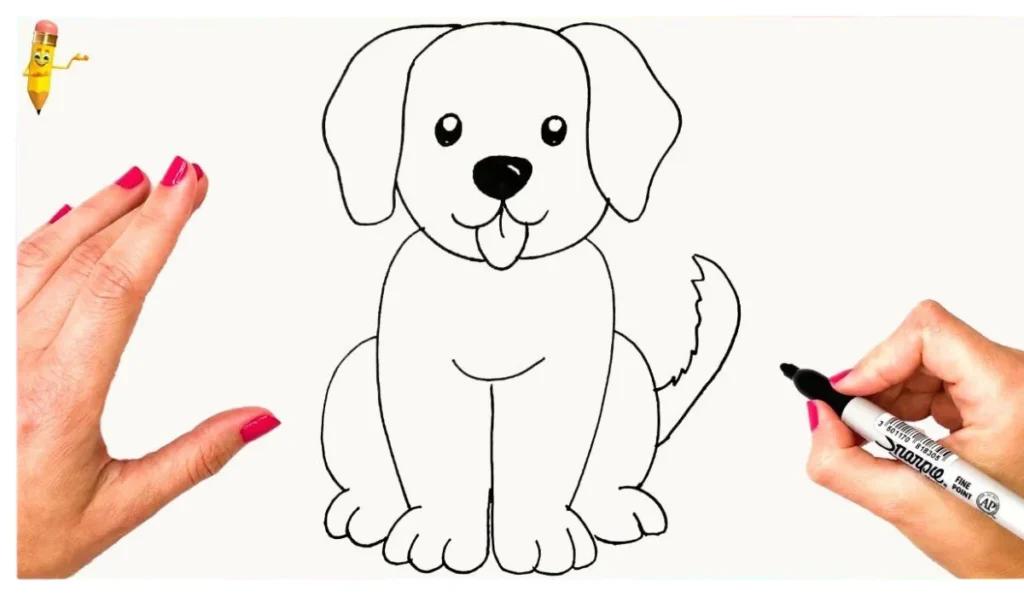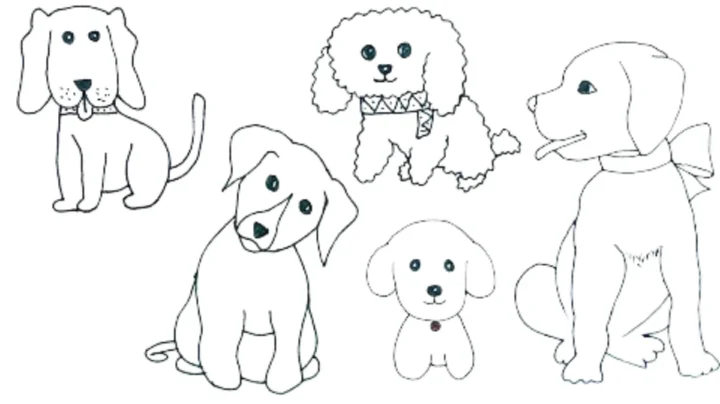Drawing:k1g 5p4= Dog can be both a rewarding and challenging experience, especially if you’re aiming for accuracy and artistic expression. In this blog post, we will explore the different facets of drawing a dog, from basic techniques to advanced tips and tricks. Whether you’re a beginner or an experienced artist, this guide will help you improve your skills and bring your canine creations to life.
Introduction to Drawing:k1g 5p4= Dog
Drawing dogs can be an exciting artistic endeavor, as it allows you to capture the unique personalities and characteristics of these beloved animals. Understanding the fundamentals of dog anatomy, proportions, and expressions is crucial to creating realistic and engaging dog drawings.
Why Draw Dogs?
Drawing:k1g 5p4= Dog can enhance your observational skills and improve your understanding of animal anatomy. Additionally, it can be a fun and therapeutic activity that allows you to express your love for dogs through art.
Read More: OvO Unblocked Games Premium
Essential Materials for Drawing:k1g 5p4= Dog
Before you start drawing, it’s important to gather the right materials. Here’s a list of essentials:
- Pencils: Use a range of pencils, from hard (H) to soft (B), for different textures and shading.
- Erasers: A kneaded eraser is useful for lightening areas and creating highlights.
- Paper: Choose a high-quality sketchbook or drawing paper.
- Blending Tools: Blending stumps or tortillons can help smooth out your shading.
- Reference Images: High-quality photos of dogs can provide valuable details.
Understanding Dog Anatomy
To draw dogs effectively, a solid grasp of their anatomy is essential. Here’s a brief overview:
Basic Structure
Dogs have a straightforward but distinct body structure that can be broken down into basic shapes:
Head: Typically an oval or rounded shape, where facial features like the eyes, nose, and mouth are placed.
Body: The body is usually an elongated oval or rectangle, varying in size depending on the breed.
Legs: Legs are cylindrical and should be proportionate to the body. They are divided into upper and lower parts, ending in paws.
Tail: The tail varies in shape and length, depending on the breed, and is usually drawn as a curved or flowing line.
Proportions
Understanding proportions is crucial for realism. Key proportions include:
Head-to-Body Ratio: Larger breeds have smaller heads in relation to their bodies, while smaller breeds may have relatively larger heads.
Leg Length: Legs should be proportional to the body size, with the front legs often slightly longer.
Read More: Sportsgurupro Spin Win Daily Free
Step-by-Step Guide to Drawing:k1g 5p4= Dog

Step 1: Sketching the Basic Shapes
Begin with a light sketch of basic shapes to outline the dog’s form. This stage is about getting the proportions and placement correct.
Step 2: Adding Details
Once you’re satisfied with the basic shapes, start adding details:
- Facial Features: Draw the eyes, nose, and mouth. Pay attention to their placement and shape.
- Fur Texture: Indicate the direction of the fur with light strokes.
Step 3: Refining the Drawing
Refine your sketch by adding more details and smoothing out lines. Focus on:
- Muscle Definition: Show the muscles and joints for a more realistic look.
- Fur Patterns: Add details to the fur to give it texture and depth.
Step 4: Shading and Highlights
Use shading to add depth and dimension:
- Light Source: Determine where the light is coming from and shade accordingly.
- Blending: Use blending tools to create smooth transitions between light and dark areas.
Step 5: Final Touches
Add any final details to complete your drawing. Erase any unnecessary lines and enhance the contrast.
Common Mistakes to Avoid

Overcomplicating Details
Don’t get too caught up in minor details at the beginning. Focus on the overall structure first.
Ignoring Proportions
Incorrect proportions can make your dog look unrealistic. Use reference images to get accurate proportions.
Neglecting Shading
Shading is essential for a realistic drawing. Ensure you have consistent light and shadow throughout your drawing.
Tips for Improving Your Dog Drawing Skills
Practice Regularly
The more you draw, the better you’ll get. Practice with different breeds and poses.
Study Dog Anatomy
Understanding dog anatomy can greatly improve your accuracy. Consider studying dog skeletal and muscular structures.
Use Reference Images
High-quality reference images can provide valuable details and inspiration.
Take Breaks
Step away from your drawing periodically to see it with fresh eyes. This can help you spot areas that need improvement.
Resources for Learning More
Books
- “The Art of Drawing Animals” by F. Scott Hess
- “How to Draw Dogs” by Jack Hamm
Online Tutorials
- YouTube channels like “Proko” and “Draw with Jazza” offer excellent tutorials on drawing animals.
- Websites like “ArtStation” feature professional dog drawings that can serve as inspiration.
Art Classes
Consider enrolling in art classes or workshops focused on animal drawing for hands-on guidance and feedback.
Also Read: Drag the Appropriate Labels to Their Respective Targets. Resethelp
Conclusion
Drawing:k1g 5p4= Dog is a rewarding skill that combines artistic creativity with an understanding of animal anatomy. By following this comprehensive guide, practicing regularly, and using the right resources, you can enhance your drawing skills and create lifelike, expressive dog portraits. Keep experimenting, and most importantly, have fun with your artistic journey!
FAQs About Drawing:k1g 5p4= Dog
1. What are the basic shapes to start with when drawing a dog?
Begin with simple shapes: an oval or circle for the head, a larger oval for the body, and lines or cylinders for the legs and tail. These shapes help establish the proportions and structure of the dog.
2. How can I improve the accuracy of my dog drawings?
To improve accuracy, study dog anatomy to understand their proportions and structure. Use reference images to guide your drawings and practice regularly to develop your skills.
3. What is the best way to capture different dog breeds?
Focus on breed-specific features such as fur texture, body shape, and facial characteristics. Study reference images of the breed you want to draw and pay attention to unique details.
4. How important is shading in dog drawings?
Shading is crucial for adding depth and dimension to your drawing. It helps create a realistic appearance by indicating light and shadow, making the dog look three-dimensional.
5. Can I use digital tools for drawing dogs?
Yes, digital tools can be very effective. Programs like Photoshop or Procreate offer various brushes and layers that can enhance your drawing process. Digital drawing also allows for easy adjustments and experimentation.
6. How do I draw a dog in different poses?
Study reference images of dogs in various poses to understand how their body moves and changes shape. Practice sketching these poses to get comfortable with the way the body adjusts in different stances.




Recent Comments